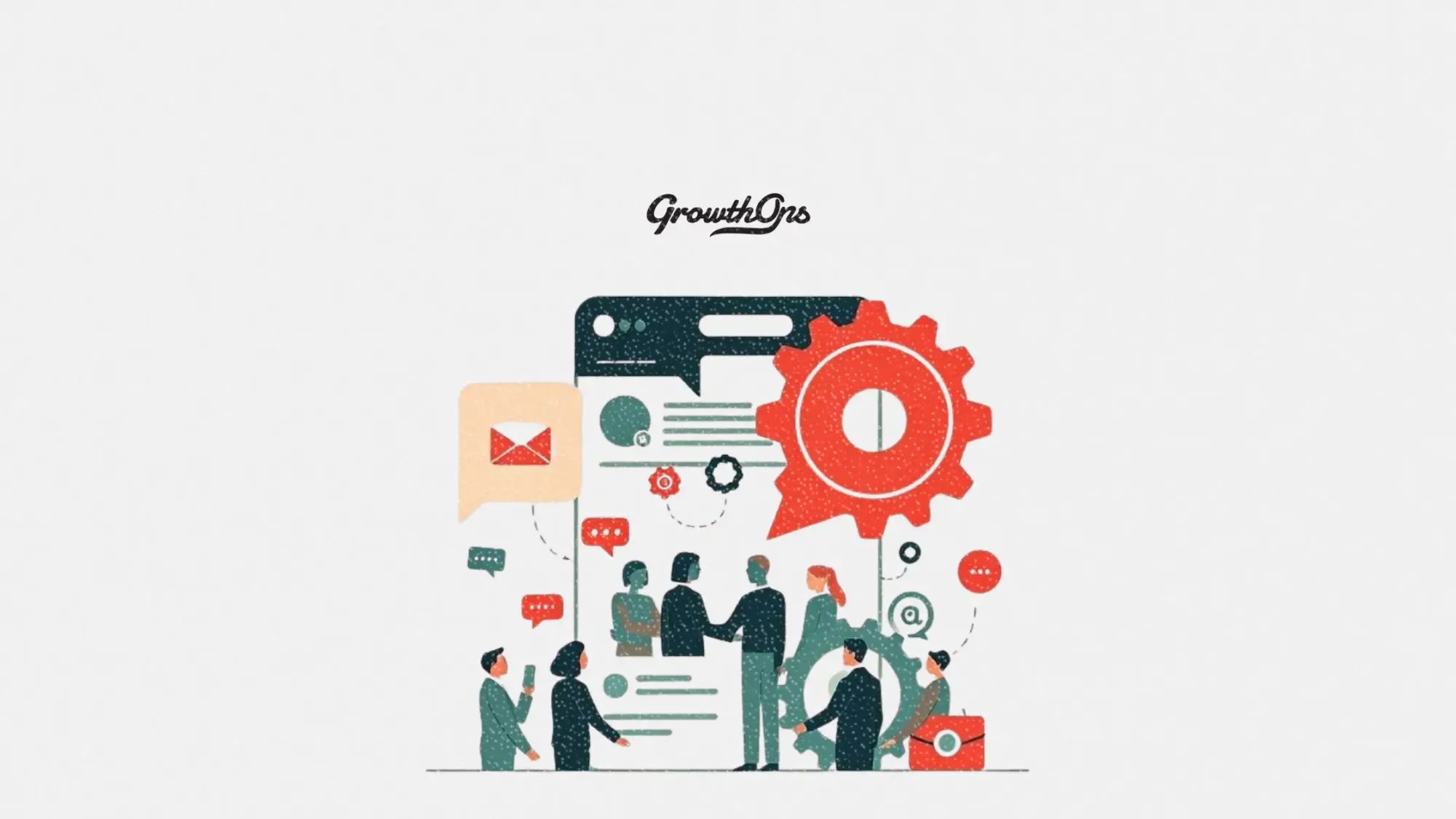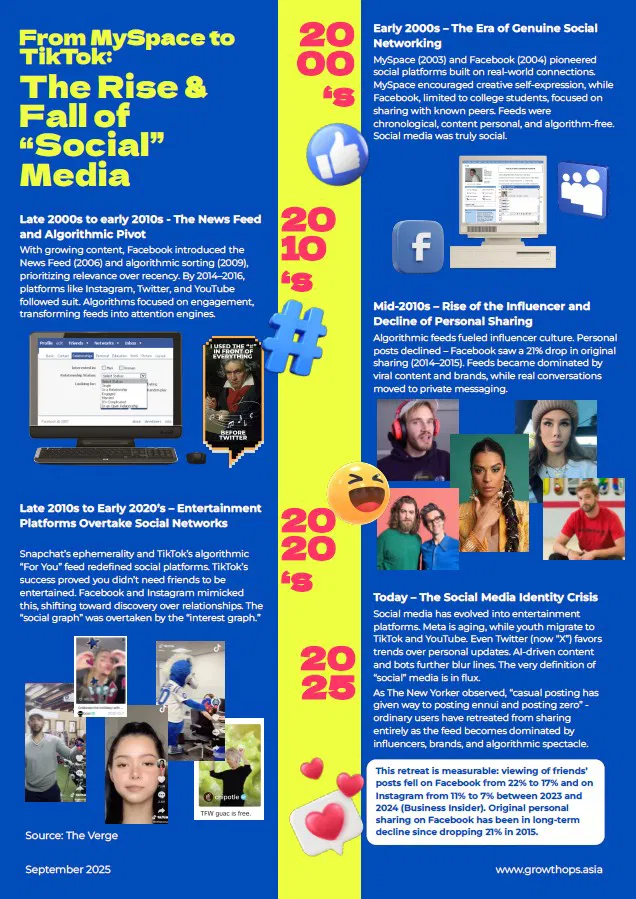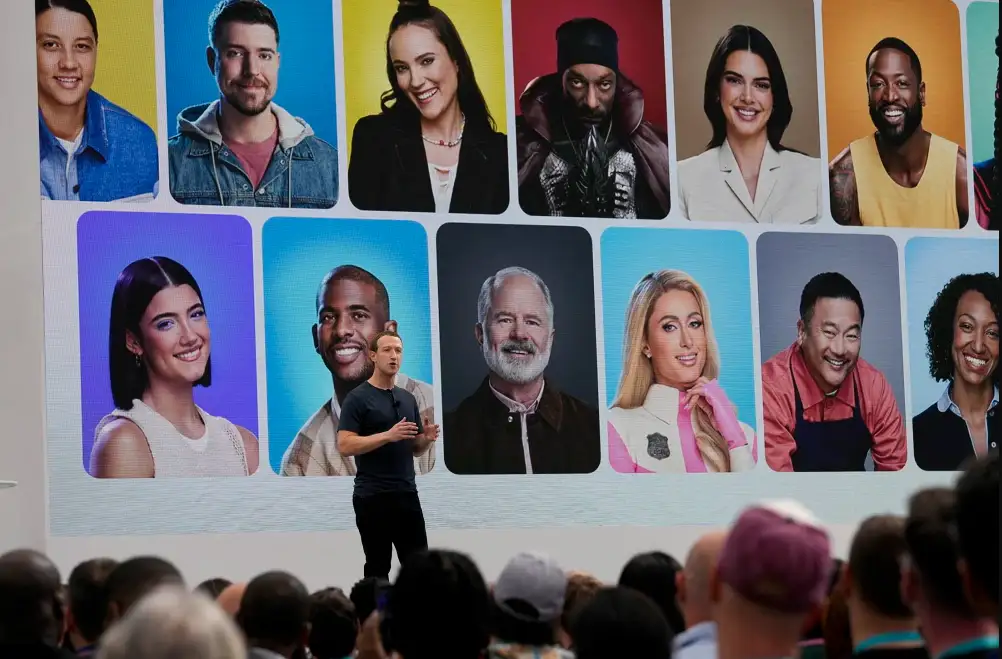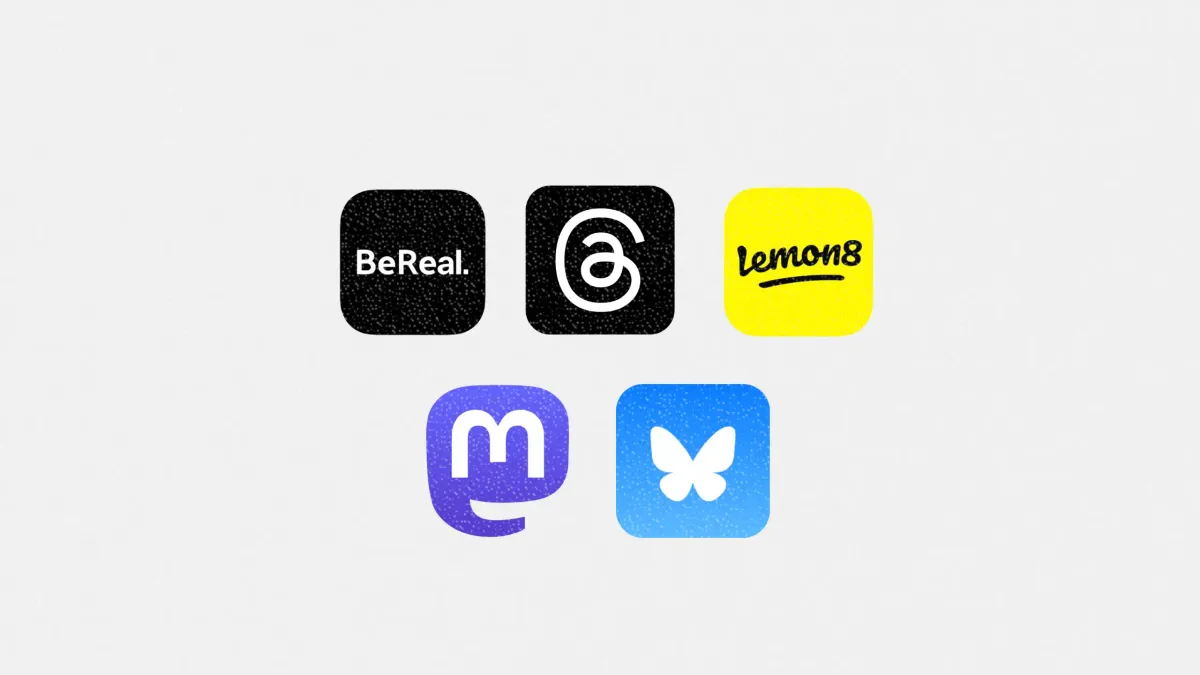GrowthOps warns that social media is losing its soul
A new study shows that audiences are tuning out social platforms. Here's how brands can rebuild trust and stay relevant.

A new white paper by GrowthOps sounds the alarm on the growing disconnect between social media's original purpose and its current state. Titled “Putting the social back into social media,” the report highlights how once-intimate platforms have become algorithm-driven, artificial, and increasingly distrusted by users.
For marketers, this shift isn't just academic. The paper lays out a stark truth: users are spending less time on content from friends and more on brand-filtered or AI-generated noise. If brands want to survive the next era of digital engagement, they’ll need to ditch the performance playbook and focus on emotional relevance and authenticity.
This article explores the data behind social media's trust crisis, the regional shifts in user behavior, and the five strategies GrowthOps says can help brands cut through the noise.
Short on time?
Here’s a table of contents for quick access:
- What’s happening to social media?
- Key insights from GrowthOps' study
- Regional differences to watch
- What marketers should do next

What's happening to social media?
Social media users are sharing less and trusting even less. According to GrowthOps, time spent viewing posts from friends dropped from 22% to 17% on Facebook and from 11% to 7% on Instagram between 2023 and 2024. These stats reflect a long-term decline in authentic personal sharing that began as early as 2015.
Instead of connection, most platforms now prioritize content that is algorithmically optimized for engagement, often from influencers, brands, or AI accounts. Nearly 25% of users now identify as influencers or content creators, turning social feeds into one-way broadcasts rather than mutual interactions.
That is a big problem for marketers who have long relied on social media to humanize their brands and build trust.
The three trends killing authenticity online

1. Trust is collapsing, even for influencers
More than 80% of consumers in Australia and New Zealand report they don’t trust social media content, including influencer posts. Globally, around the same proportion prefer user-generated content (UGC) over sponsored or branded content. In short, audiences crave real stories from real people, not polished influencer ads.
2. Fake accounts and AI slop are taking over
Facebook deleted 1.3 billion fake accounts in a single quarter. That is not a typo. The platform estimates that 4 to 5% of active users are not human. Meanwhile, bot-generated or low-effort AI content — what GrowthOps calls “AI slop” — is flooding timelines, eroding user experience and trust.
As General Manager Chris Greenough bluntly puts it, “The internet feels less human because, in many ways, it is.”

3. The death of the “third space” is pushing users elsewhere
In real life, traditional third spaces like cafes, clubs, and community groups are in decline. Online, users are retreating to smaller, interest-based communities on platforms like Reddit and Discord. Even AI companions are stepping in: 33% of U.S. Gen Z users now report turning to AI chatbots for social interaction.

Regional differences to watch
While the West is seeing a mass migration toward niche communities and stricter regulation, the story varies elsewhere.
- In East Asia, younger users are embracing AI companions with far less hesitation.
- In South Asia, social media is still thriving as an entertainment hub, especially through short-form video.
This underlines a key takeaway from the GrowthOps paper: the decline of "social" in social media is not uniform. Marketers need to localize both their messaging and their strategies.

What marketers should do next
GrowthOps outlines five strategies that can help brands course-correct before it is too late:
1. Entertain, don’t just explain
Think like a showrunner. Create episodic, character-driven content that keeps audiences coming back. Campaigns that build fluency and emotional depth over time are 7.5x more profitable, according to the study.
2. Bring back the human touch
Run live events and offline activations that anchor your digital brand in real-world experiences. Use these moments to turn followers into participants.
3. Empower employees as creators
Consumers trust employees more than executives or influencers. Tap into your internal talent to produce content that feels grounded and relatable.
4. Build for emotion, not just conversion
Instead of optimizing for quick hits, develop campaigns with emotional storytelling and enough time to mature. The ROI may be slower, but it is more durable.
5. Adapt for AI discovery
GrowthOps recommends embracing generative engine optimization (GEO) to stay visible in AI-powered search and digital assistants. That means structuring your content for how machines find and recommend, without sacrificing human resonance.

Stop chasing virality. Start earning trust.
As Chris Greenough puts it, “Chasing ‘more for less’ is a race to the bottom.” Social media promised community but delivered content overload. Now it is up to marketers to rebuild what has been lost.
Whether it is through employee creators, IRL activations, or trust-first content, brands that prioritize authenticity and community will be the ones to thrive.










